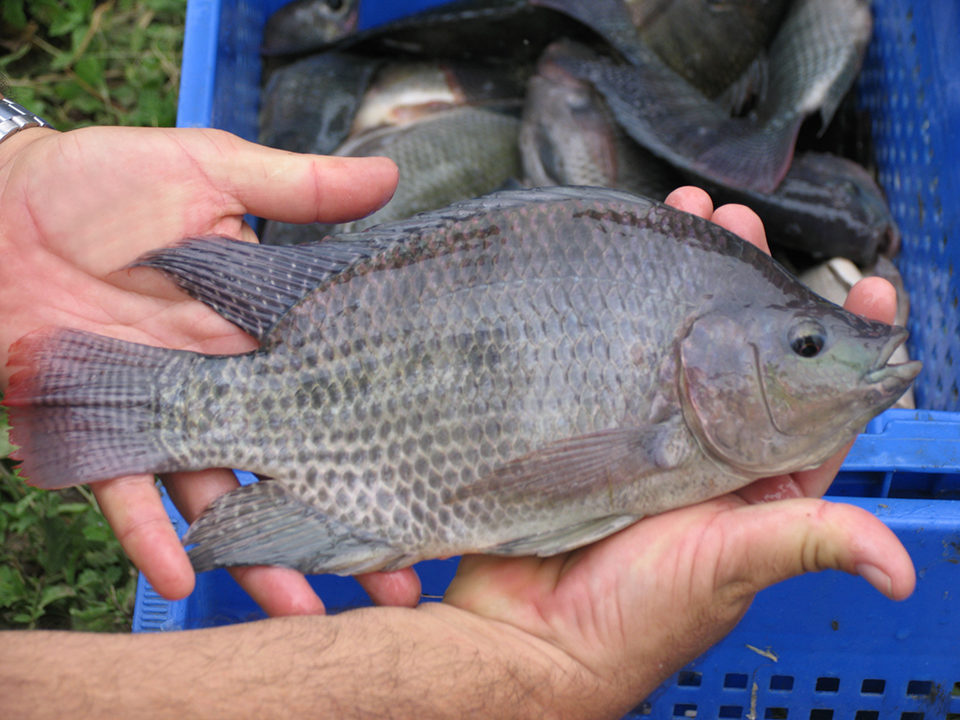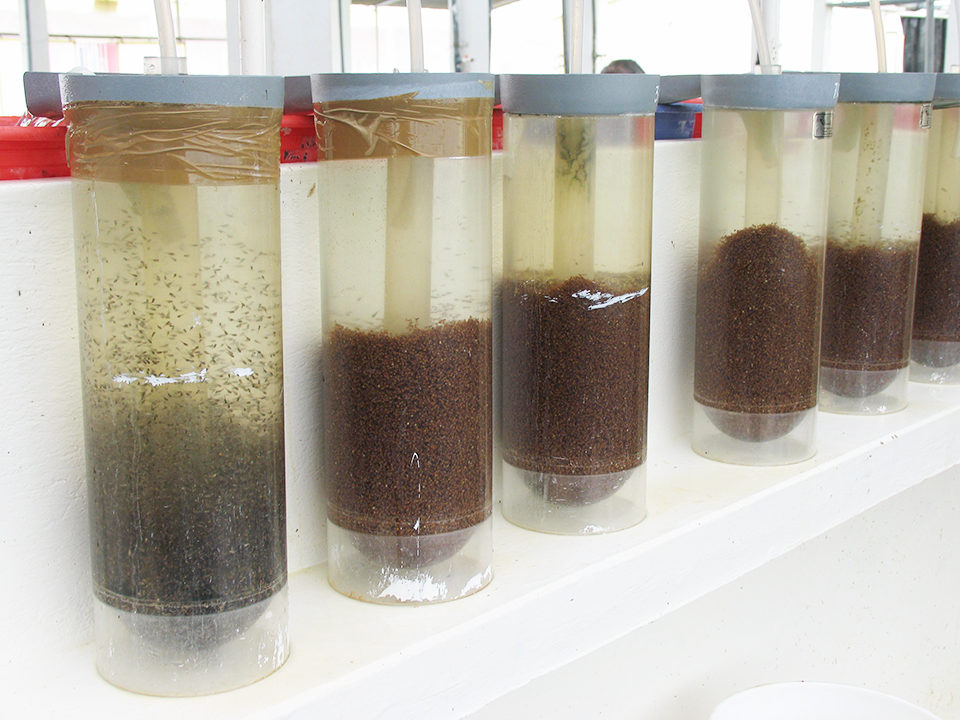Disease prevention and control requires integrated approach

Tilapia is currently the second-most-produced fish in the world, and production of this species is increasing. In fact, the popularity of tilapia is skyrocketing. In 2010, Intrafish predicted, the global value of tilapia will be U.S. $4 billion.
In many areas, tilapia production is already extensive and likely to intensify. Intensified production, however, will undoubtedly lead to challenges, including sourcing quality seed, maintaining fish quality, controlling disease and ensuring food safety.
At intensive operations, disease is virtually inevitable, in part because the farming environment is artificial and stressful compared to natural habitat. Effective prevention and control of disease requires an integrated approach to health management that takes into account all the aspects of fish farming that impact the health of the fish population.
Disease expression
The expression of disease at any fish farm involves four controllable factors: the species, farm management, environment and pathogens present. No one factor dominates, but the type and severity of the disease will depend on the complex relationship among them all.
Poor farm management, a suboptimal environment and/or the presence of pathogens result in fish stress. Stress is a product of the trauma that fish suffer and the length of time they are exposed. Disease develops when a combination of factors raise the stress level of the fish population to a point that is detrimental to the immune system.
Farm management
There is great diversity in the husbandry systems used at tilapia farms around the globe. There is also correspondingly large variation in tilapia strains and hybrids, allowing farmers to select for different traits to suit local conditions. This ensures good growth in systems ranging from clear, open-water cages or greenwater ponds to closed, recirculating raceways and tanks. No matter what system is employed, there are important issues to address before its full production potential can be realized.
Quality seedstock
A primary concern is identifying a consistent source of good-quality seedstock. Hatchery-produced fish are recommended because they are often genetically selected or improved, monitored for diseases and given an optimal diet. This results in a more uniform starting point for the farmer, which results in more reliable and reproducible results.
Suboptimal feeding or other environmental stressors, such as poor water quality, will result in poor-quality, weak fish and increased susceptibility to opportunistic pathogens. The smaller fish are, the lower the reserves they have, and stress will put more strain on their tolerance limit.
With consistent, disease-free quality seedstock, emphasis should be placed on biosecurity to prevent or limit the transfer of pathogens to the site. This requires minimizing the possible transfer vectors, which include humans, animals, equipment, water and machinery. Defined or physical barriers that minimize the spread of disease will play an ever-increasing role in aquaculture.
Sanitary measures
Although some vector movement among production units within farms is unavoidable, correct sanitary measures are a necessity, for poor hygiene measures are often the root cause of disease.
There are three important steps in the sanitary process for any situation. The first is cleaning, which entails the removal of unwanted substrate. The next is disinfection, designed to eliminate unwanted organisms with the appropriate choice of products and methodology. Finally rinsing removes the remnants of potentially toxic disinfectant chemicals. To control the transmission of fish pathogens, it is vital that this sequence be followed for all surfaces with direct or indirect contact with fish.
Good sanitation can control or even eliminate disease outbreaks, but implementation can be a limiting factor. Employees must be proactive and experienced in applying well-defined protocols to meet clear goals. The aim is to ensure that fish welfare is the top priority, and any adverse event is reported and dealt with quickly.

Record keeping
Another factor that correlates farm management to disease outbreaks is production recording. If recorded data is relevant, clear and precise, it can help in the early recognition of disease. Disease triggers are multifactorial and often complex, but time-data records enable comparisons of historical situations and often reveal repetitive disease trends.
Typical patterns may include fluctuations in environmental parameters, changing characteristics in fish behavior and/or or the severity and onset of mortality within a population. Recognizing these triggers through good production records can go a long way in improving disease management.
Culture conditions
The environment plays a crucial role in the expression of disease. For example, most diseases in tilapia thrive in certain temperature and salinity ranges. This adds to the complexity of tilapia farming, but such knowledge is a useful tool in disease control since, in many cases, temperature and salinity can be manipulated.
Greenhouses, for example, are now common throughout aquaculture in China. They help prevent suboptimal growth and coldwater diseases. In addition, the use of saltwater, if readily available, can help control parasitic or saline-dependent bacterial outbreaks.
Pathogens
Tilapia are susceptible to both non-infectious and infectious diseases. An infectious disease occurs when a pathogen is present. While identifying the pathogen is a good start, that does not prove it is the cause of reduced performance, morbidity or mortality. To accurately diagnose the cause of disease, field sampling and diagnostic techniques must be performed.
It is crucial that the correct samples are sent for analysis. Moribund fish should be sampled, since common environmental bacteria contaminate dead fish quickly and can mask identification of the pathogens that caused the disease. Furthermore, it is of no value to investigate fish with clinical signs that do not represent those of the greater diseased population.
To really understand the cause of disease, it is essential to implement long-term, routine field sampling and disease epidemiology. Correct sampling techniques will identify the specific pathogens present and screen for anything new entering the system. Once established in the farm management system, this information, combined with knowledge about disease triggers, allows effective identification and resolution of problems.
Major bacterial diseases
For the last eight years, Intervet/Schering-Plough Animal Health has conducted extensive sampling and epidemiological investigations throughout Asia-Pacific, Africa and Latin America. Four major bacterial disease pathogens have been found – Streptococcus agalactiae, Streptococcus iniae, Flavobacterium columnare and RLO, which stands for rickettsia-like organism, recently identified as a species of Francisella. One viral disease, iridovirus, was identified, along with several important external protozoal and monogenetic parasites, such as the commonly found Trichodina and Gyrodactylus species.
Treatment and prevention
An integrated health management plan encompasses all factors that affect fish health. Key components of the plan are two complementary strategies aimed at dealing with infectious diseases. One is reactive pathogen exclusion, and the other is proactive pathogen prevention. Given time and understanding, the reactive strategy may develop into an optimized metaphilactic treatment given just before the fish get sick.
Therapeutic medicines used in food animals, particularly antibiotics, have resulted in controversial discussions in the press recently. Environmentalists want assurances that natural ecosystems won’t be damaged, and consumers want to know that any antibiotic treatment used will not contribute to antibiotic resistance in people and that the foods they eat do not contain antibiotic residues. There has also been discussion about the presence of prohibited antibiotics in food animals.
In light of these pressures and to ensure the sustainability of the aquaculture industry, it is imperative that reactive, therapeutic disease management be conducted responsibly. The first step is correct identification of the etiological disease agent and corresponding treatments. Treatment with an antibiotic may be indicated for an outbreak of bacterial infection, but cannot be used to treat parasites.
Therapeutic drugs must be administered in strict compliance with manufacturers’ label recommendations regarding dose, duration and withdrawal times. Disease treatments should be supervised by fish health professionals to ensure that fish receive appropriate therapy, but it is fish farmers’ responsibility to adhere to specified withdrawal periods for antibiotics. It is also fundamental that any chemical administered has regulatory approval for use in fish in the local country.
Perspectives
History has taught us there will always be new diseases. But responsible therapeutic management can minimize the short-term impacts of disease and help allay fears among environmentalists and consumers. However, drug treatment should never be considered a long-term solution, since the root of disease problems must be identified and proactively addressed through integrated health management.
Preventive disease strategies should aim at reducing stress in fish through good husbandry practices, the use of immunomodulators to boost the immune system and the use of vaccines. Remember that vaccines target specific diseases, and cross-protection rarely occurs.
(Editor’s Note: This article was originally published in the May/June 2010 print edition of the Global Aquaculture Advocate.)
Author
-
Neil Wendover, B.S.
Technical Services Manager, Asia Pacific
Intervet/Schering-Plough Animal Health
Related Posts

Health & Welfare
10 paths to low productivity and profitability with tilapia in sub-Saharan Africa
Tilapia culture in sub-Saharan Africa suffers from low productivity and profitability. A comprehensive management approach is needed to address the root causes.

Aquafeeds
A look at corn distillers dried grains with solubles
Corn distillers dried grains with solubles are an economical source of energy, protein and digestible phosphorus to reduce feed costs and fishmeal usage.

Intelligence
Adding value to tilapia to tap into U.S. market
New markets for tilapia and expansion of existing ones can be created by planning and implementing properly designed geographic strategies to meet discriminating consumer preferences. Low labor costs in most producing countries promotes value-adding by the production of fresh fillets.

Responsibility
Addressing safety in Latin America’s tilapia supply chain
Over the last decade, the experience gained by many tilapia farmers combined with proficient programs implemented by local governments have significantly improved tilapia production in various Latin American countries like Colombia, Mexico, Ecuador and other important tilapia producers in the region.


